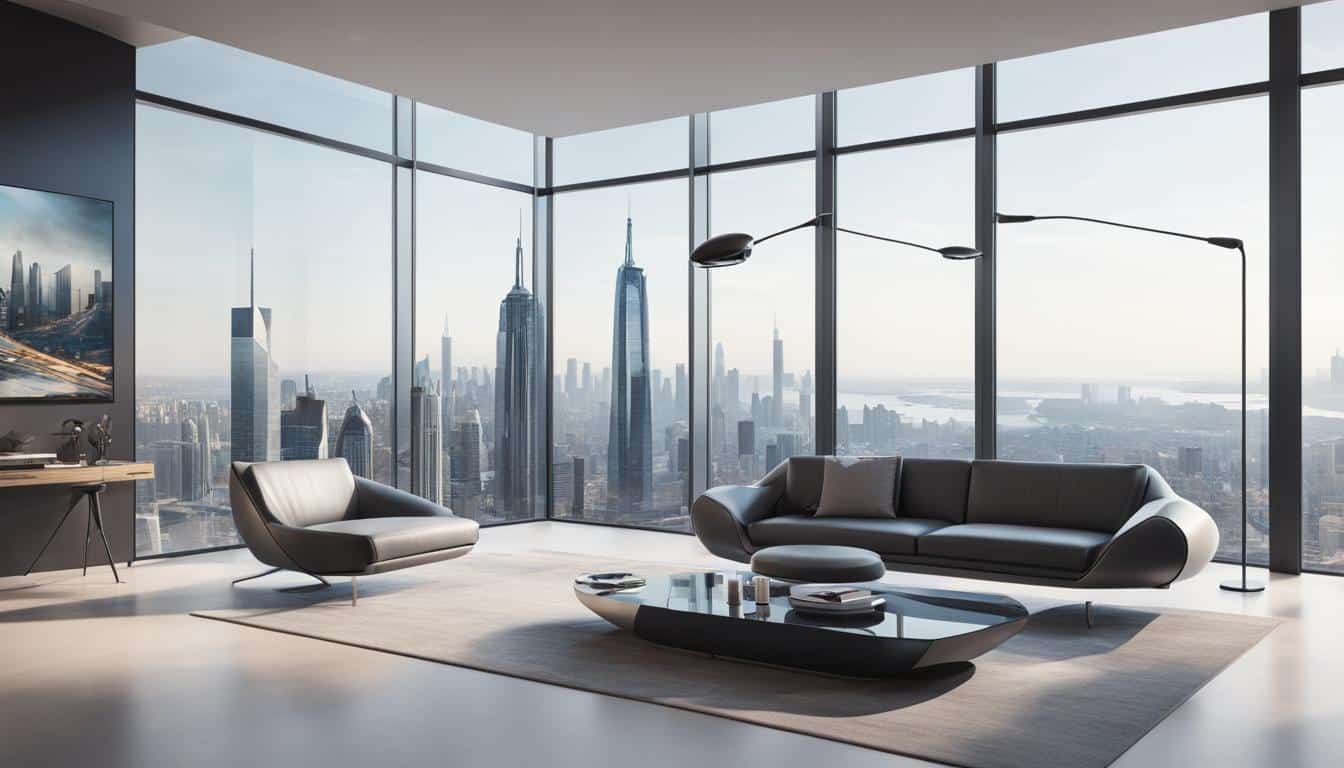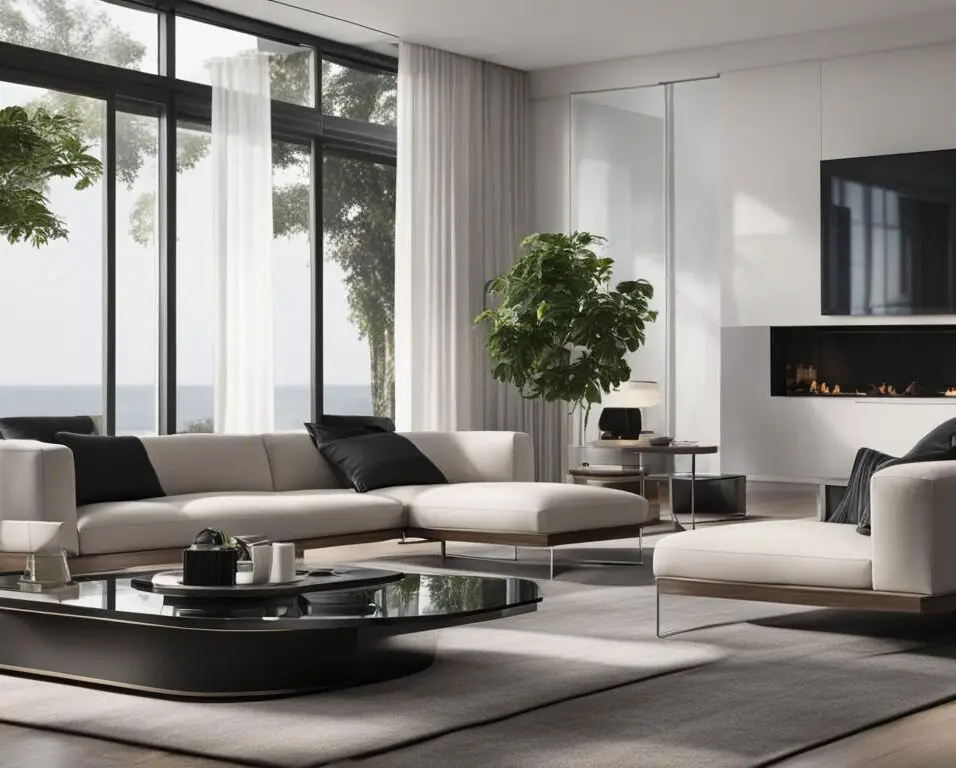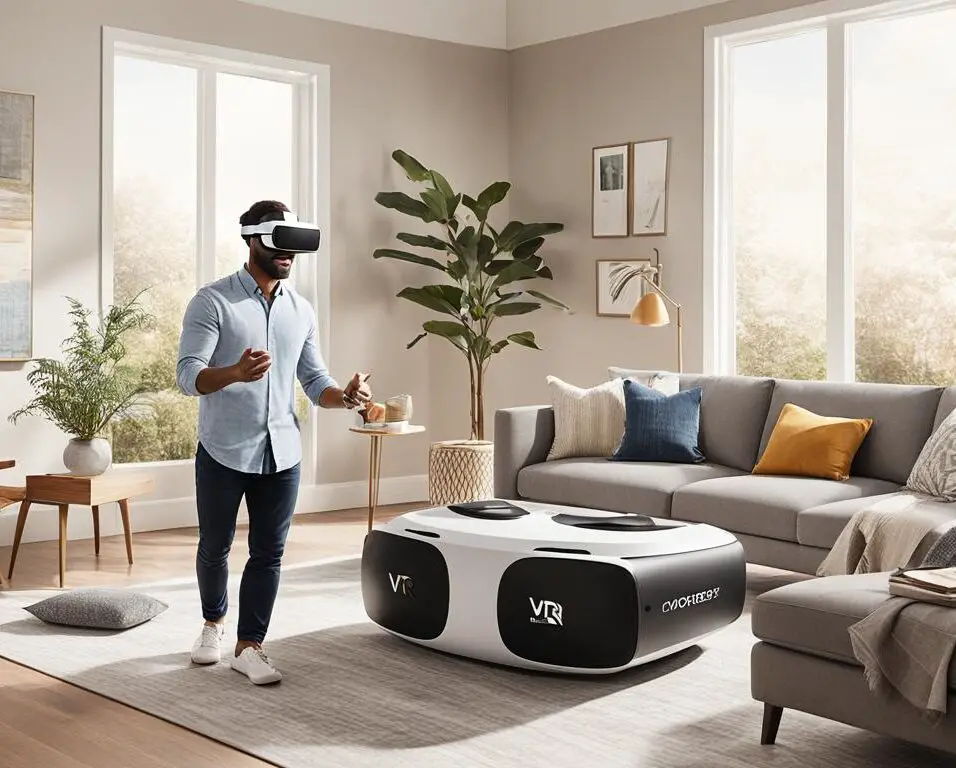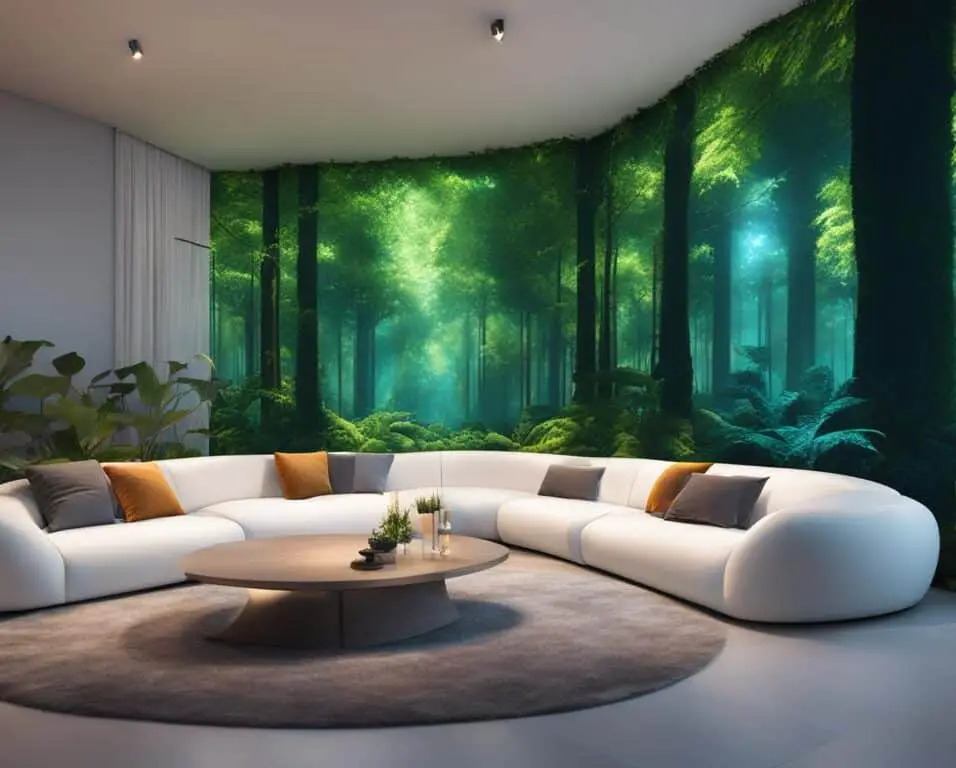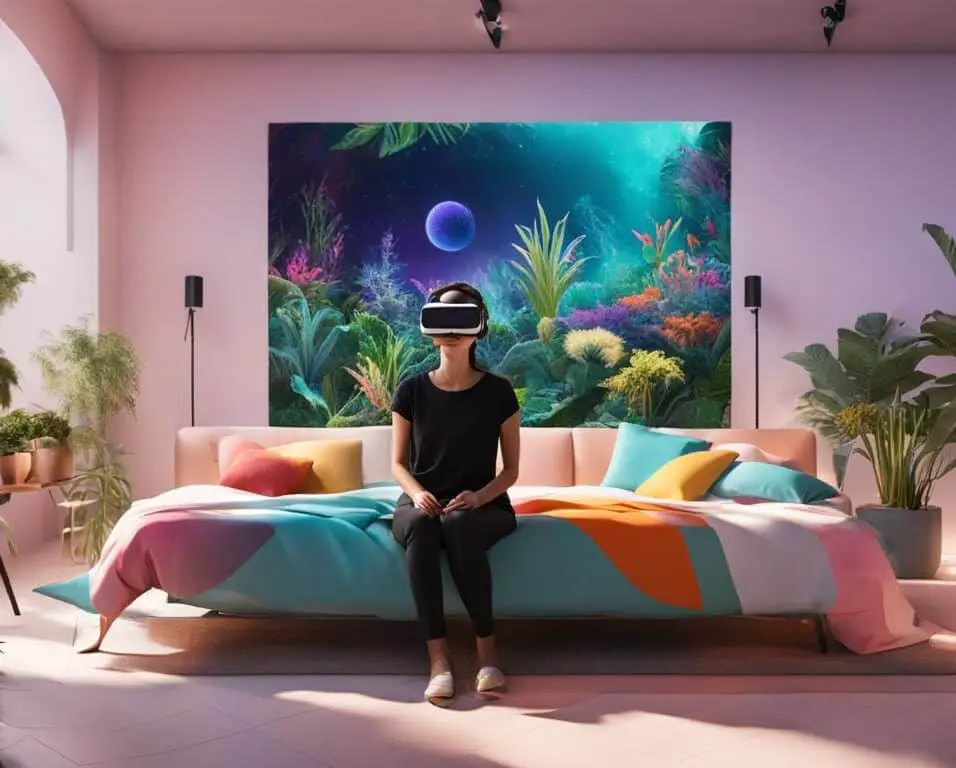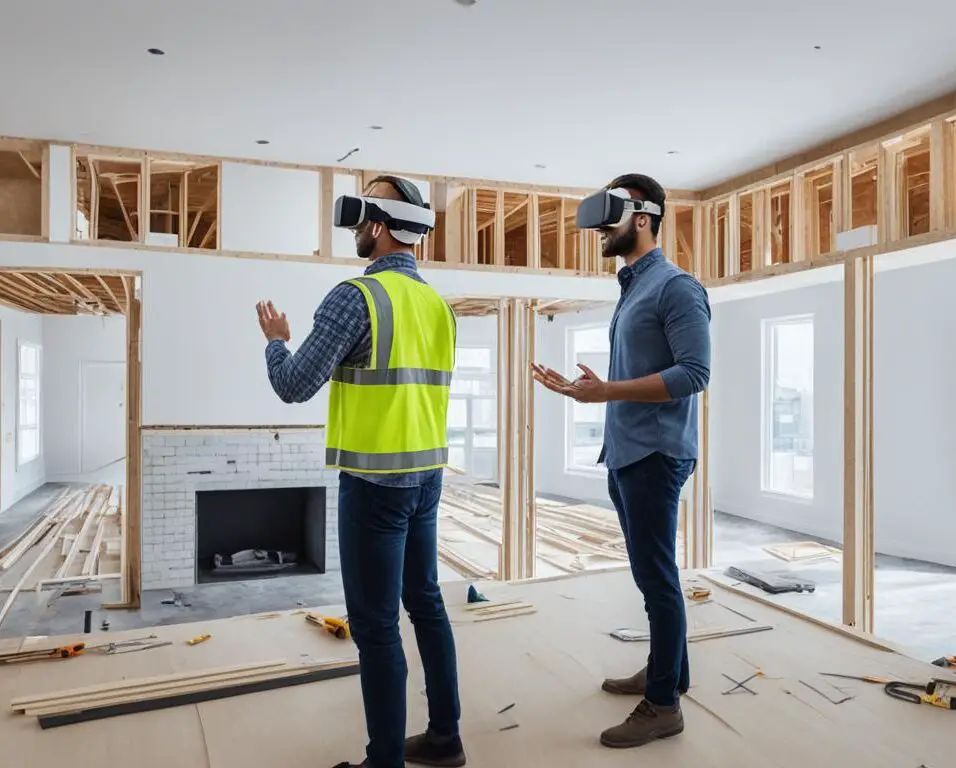Step Inside Your Dream House: VR Enabled Architectural Walkthroughs
Immersive home design has taken a giant leap forward with the advent of VR enabled architectural walkthroughs. With virtual reality (VR) technology, you can now step inside your dream house and experience it in ways never before possible. This groundbreaking innovation allows you to visualize your future home, make informed decisions, and ensure that your vision aligns with reality.
Imagine being able to walk through each room, feeling the space come alive around you, and interacting with the elements of your dream house. VR enabled architectural walkthroughs offer a truly immersive and realistic experience, giving you the opportunity to explore every nook and cranny before construction even begins.
These virtual experiences are made accessible through the efforts of brands like Honeywell’s Impact, which is specifically tailored for the Micro, Small, and Medium Enterprises (MSME) sector in India. Honeywell India’s commitment to innovation and localization ensures that VR enabled architectural walkthroughs are readily available to a wide range of clients, addressing their unique challenges and needs.
Key Takeaways:
- VR enabled architectural walkthroughs revolutionize the way we experience home design
- These immersive experiences allow homeowners to visualize their dream houses in incredible detail
- Honeywell’s Impact brand brings sustainable and digital solutions to the MSME sector in India
- Virtual reality technology provides realistic and interactive visualization of future homes
- Architects benefit from VR enabled walkthroughs in presenting their designs and streamlining the design process
The Power of VR Enabled Architectural Walkthroughs
VR enabled architectural walkthroughs offer a multitude of benefits and advantages to homeowners and architects alike. By harnessing the power of virtual reality technology, individuals can immerse themselves in their future homes, gaining a lifelike experience like never before. Walking through the rooms, interacting with objects, and experiencing a realistic sense of space allows for more informed decision-making.
Homeowners can witness firsthand how different design choices, materials, and layouts impact the overall look and feel of their dream house. This level of visualization enhances the design process, helping homeowners to better articulate their preferences and ensuring their vision aligns with reality.
For architects, VR enabled architectural walkthroughs provide a powerful tool for presenting designs to clients. By offering real-time feedback in an immersive environment, architects can effectively communicate their ideas, improve collaboration, and streamline the design process.
“Virtual reality technology is revolutionizing the way we experience and understand architectural design. It allows us to create environments that are not only visually stunning but also deeply engaging. VR enabled architectural walkthroughs offer unparalleled opportunities for client interaction, resulting in designs that are tailored to their unique needs and desires.”
In addition to enhancing the client-architect relationship, VR enabled architectural walkthroughs have several practical advantages. They eliminate the need for physical 3D models or concept boards, reducing costs and saving valuable time. This technology also enables architects to experiment with different design iterations quickly and efficiently, accelerating the decision-making process.
Benefits of VR Enabled Architectural Walkthroughs:
- Immersive and realistic visualization of future homes
- Improved decision-making through interactive exploration
- Enhanced client collaboration and effective communication
- Saves costs and time by eliminating physical models
- Streamlines the design process and facilitates faster iterations
It is clear that VR enabled architectural walkthroughs unlock tremendous potential for homeowners and architects alike. The combination of virtual reality technology and realistic visualization empowers individuals to turn their dreams into reality and revolutionizes the future of architectural design.
| Benefits | Homeowners | Architects |
|---|---|---|
| Immersive Experience | ✔️ | ✔️ |
| Realistic Visualization | ✔️ | ✔️ |
| Improved Decision-Making | ✔️ | ❌ |
| Enhanced Collaboration | ❌ | ✔️ |
| Cost and Time Savings | ❌ | ✔️ |
The Process of Creating VR Enabled Architectural Walkthroughs
The process of creating virtual architectural walkthroughs involves several steps that combine 3D modeling and immersive virtual environments. This innovative process allows homeowners to experience their dream houses in a highly realistic and interactive way.
First, architects or designers utilize specialized software to create a detailed 3D model of the house. This model encompasses every aspect, including walls, windows, doors, furniture, and lighting. In essence, it serves as a digital blueprint that reflects the desired design and layout.
Once the 3D model is complete, it is imported into a virtual reality platform specifically designed to generate immersive virtual environments. This platform leverages the power of virtual reality headsets, which enable users to fully immerse themselves in the virtual space.
With a virtual reality headset, homeowners can navigate through different rooms, interact with objects, and get a genuine feel for the space. They have the ability to explore various design options, change materials, experiment with lighting, and even venture outside to view the surrounding landscape.
This process of creating VR enabled architectural walkthroughs offers a remarkable level of customization and personalization, ensuring that the final design not only meets but exceeds the homeowner’s expectations.
The Advantages of VR Enabled Architectural Walkthroughs:
- Realistic Visualization: By immersing homeowners in a virtual environment, VR enabled architectural walkthroughs provide an unparalleled level of realism, allowing them to see exactly how their future space will look and feel.
- Enhanced Decision Making: With the ability to explore different design choices and experience them firsthand, homeowners can make more informed decisions about their dream house.
- Improved Collaboration: Architects can use VR enabled architectural walkthroughs to effectively communicate their design ideas and collaborate with clients in real-time. This leads to better understanding, feedback, and overall project success.
- Streamlined Design Process: The use of virtual reality technology streamlines the design process, reducing the need for costly and time-consuming revisions. This results in more efficient project timelines and better cost management.
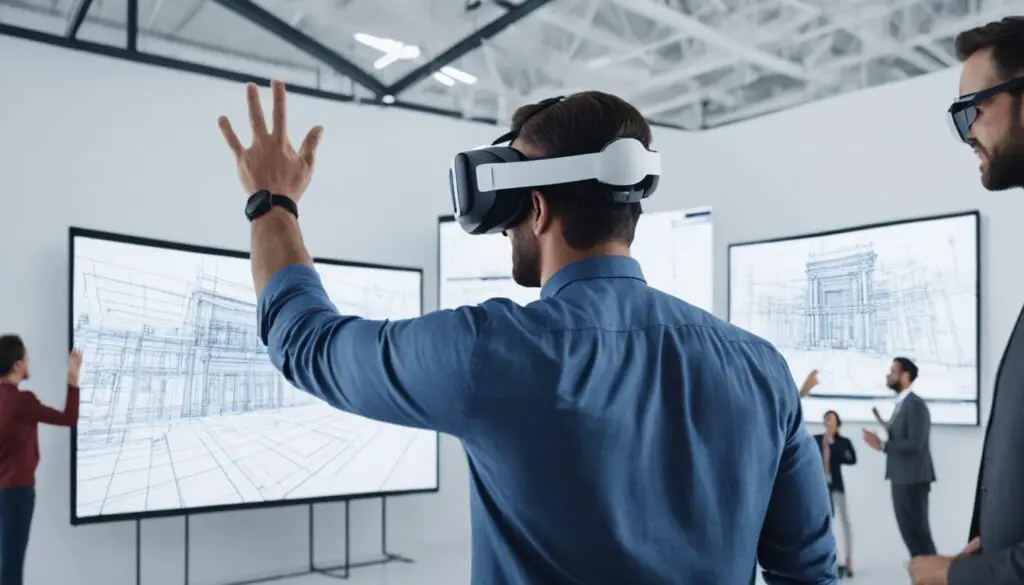
Creating VR enabled architectural walkthroughs has revolutionized the way homeowners and architects approach the design process. This immersive and interactive technology opens new doors for creativity, collaboration, and visualization, ensuring that the final result is a perfect reflection of the homeowner’s vision.
The Future of VR Enabled Architectural Walkthroughs
The future of architectural design is being reshaped by the continuous advancements in virtual reality (VR) technology. As VR technology continues to evolve, the quality and realism of VR enabled architectural walkthroughs will reach unprecedented levels. With faster processing speeds, higher-resolution displays, and more intuitive controllers, homeowners will soon be able to explore their dream houses with even greater detail and accuracy.
Imagine being able to step into a virtual representation of your future home, where every detail is brought to life in immersive 3D. You can walk through the rooms, admire the architectural elements, and interact with the space. From adjusting wall colors and flooring materials to experimenting with lighting and furniture layouts, VR enabled architectural walkthroughs offer unparalleled customization and personalization.
Not only will these advancements elevate the homeowner’s experience, but they will also revolutionize the architectural design industry as a whole. VR technology has the potential to streamline the design process, reducing costs and enhancing efficiency. Architects can collaborate with clients more effectively by showcasing their designs in a highly realistic virtual environment, facilitating clear communication and better decision-making.
Furthermore, as VR technology becomes more affordable and accessible, we can anticipate widespread adoption of VR enabled architectural walkthroughs. This innovative approach to home design will cease to be a luxury reserved for a select few, and instead become a standard practice in the industry. Homeowners will have the opportunity to visualize their dream homes in unparalleled detail, ensuring that their vision aligns with reality before construction even begins.
Transforming the Future of Architecture with VR Technology
The impact of VR enabled architectural walkthroughs extends beyond individual homes. This technology has the potential to transform the way entire communities and cities are designed. Architects and urban planners can utilize VR technology to create virtual environments that simulate large-scale development projects, allowing stakeholders to evaluate and provide feedback on proposed designs.
VR enabled architectural walkthroughs offer the opportunity to visualize the future of our built environment and make informed decisions that shape the world we live in. The architectural design process is no longer confined to blueprints and 2D renderings; it has transcended traditional boundaries and entered a new era of immersive experiences. – Jane Smith, Architectural Innovator
With VR technology at the forefront of architectural design, the possibilities are endless. From designing sustainable and energy-efficient buildings to improving accessibility and user experience, VR enabled architectural walkthroughs are paving the way for a more thoughtful and creative approach to construction.
In conclusion, the future of architectural design lies in the realm of VR enabled architectural walkthroughs. As technology continues to advance and VR becomes more commonplace, this innovative tool will revolutionize the home design industry, offering homeowners the ability to visualize their dream homes in ways never before imagined. From the smallest details to the grandest visions, VR technology will ensure that architectural designs can be experienced and appreciated to their fullest potential.
Conclusion
VR enabled architectural walkthroughs offer an exciting glimpse into the future of home design. With the power of virtual reality technology, homeowners can now step inside their dream houses and experience them in a whole new way. This immersive and realistic visualization process enhances the design and decision-making process, allowing individuals to truly visualize their vision come to life.
Not only do VR enabled architectural walkthroughs benefit homeowners, but they also provide architects with a powerful tool to communicate their ideas and collaborate with clients. Through virtual reality, architects can showcase their designs in a lifelike manner, enabling clients to fully understand and engage with the proposed space. It revolutionizes the way architects and clients interact, leading to more efficient and effective design processes.
As VR technology continues to evolve and become more accessible, we can expect VR enabled architectural walkthroughs to become a standard practice in the home design industry. The future of architecture is a future where individuals can easily visualize their dream houses, making informed decisions and ensuring that their vision aligns with reality. So, if you’re embarking on a home design project, consider taking a virtual tour first with VR enabled architectural walkthroughs. It’s an opportunity to bring your dreams to life and create a space that truly reflects your vision.
FAQ
What are VR enabled architectural walkthroughs?
VR enabled architectural walkthroughs are immersive experiences that allow homeowners to visually explore and interact with their future homes using virtual reality technology.
What are the benefits of VR enabled architectural walkthroughs?
VR enabled architectural walkthroughs offer homeowners the ability to make informed decisions by visualizing their space, exploring different design choices, and understanding how materials and layouts impact the overall look and feel of the house. Additionally, architects can effectively present their designs to clients and streamline the design process.
How are VR enabled architectural walkthroughs created?
Architects or designers create a 3D model of the house using specialized software. This model is then imported into a virtual reality platform to create immersive virtual environments. Viewers can use virtual reality headsets to navigate through these environments and experience their future homes in a highly realistic and interactive manner.
What does the future hold for VR enabled architectural walkthroughs?
As VR technology advances, VR enabled architectural walkthroughs will continue to improve in quality and realism. With faster processing speeds and more intuitive controllers, homeowners will have even greater detail and accuracy in exploring their dream houses. Additionally, as VR technology becomes more affordable and accessible, widespread adoption of VR enabled architectural walkthroughs in the home design industry is anticipated.



